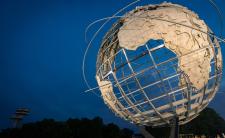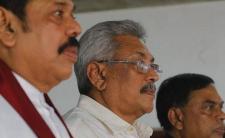The Democratic Socialist Republic of Sri Lanka sits on an island covering approximately 65,630 kilometres in the Indian Ocean. Located off the south-eastern coast of India, it is home to 21 million people from different ethnic and religious backgrounds. The island has been struggling with its multicultural reality, which culminated in a bitter civil war between the ruling Sinhalese and Tamil separatists that ended in 2009. Rocked by political and military struggles, the island’s economy has been sluggish and lacking in foreign investment. 14% of the population is urban, and the largest city is the capital of Colombo with 680,000 people. The majority of the population is Buddhist, but with significant minority populations of Hindus, Christians, and Muslims.
Constitutional history
Sri Lanka’s political system has been shaped by its history as a British colonial possession, dating from 1801. The British attempted to develop a representative government on the island through an 1833 constitution that created a legislative council. This council was largely powerless, however, and resigned in 1864 when their censure of the British government was ignored. The British attempted several other Constitutions to appease the populace in 1910, 1920, and 1924, but these constitutions did not provide for local governance by the native population. The 1931 Constitution finally gave more authority to the native elected representatives over internal concerns. Over the next 40 years, the British attempted to give more authority and independence to the island in the hopes of transferring it to dominion status within the British Empire. On 4 February 1948, the country declared its independence from Britain, but remained a commonwealth of the Empire. It was not until 16 May 1972 that the nation officially proclaimed itself an independent republic.
Under British rule, the northern Tamils had gained influence through their disproportionate access to education. Thus, in the early years of post-independent Sri Lanka, the Tamils managed to influence the creation of a new constitution on 31 August 1978. This Constitution, still in force today, was created to grant more local autonomy and equalize the Tamil and Sinhala ethnic groups. Over the past 40 years, the Constitution has been amended several times. The 17th amendment, passed in 2001, was meant to ensure more transparency with the creation of a constitutional council with representation from the executive and legislative branches, the government, the political parties, and the public. This came in the wake of a failed attempt to write a new constitution that died in 2000. This constitution was designed to create a federal system which would grant Tamil demands for a separate state. It was hoped that this constitution would see the end of the intense and bloody civil war between the Sinhalese majority and the Tamil minority, represented by the guerrilla group called the Liberation Tigers of Tamil Eelam (LTTE), but it died before a vote due to political infighting. On 19 May 2009, President Mahinda Rajapaksa declared that that the Sinhalese government had defeated the LTTE. In the wake of his rise in popularity, the President introduced an 18th amendment designed to expand the already extensive executive powers by overruling the 17th amendment. This proposal was adopted by the Parliament in September 2010 over great popular opposition, giving the President the power over appointments and eliminating his term limits.
The 1978 Constitution
The Constitution of Sri Lanka revolves around a President invested with broad executive powers. It has 172 articles, recognizes Buddhism as the state religion, and guarantees a broad range of fundamental rights. The Constitution also establishes the duties of the state and the citizen. It is the task of the state to establish a democratic socialist state, ensure the distribution of wealth, oversee economic development, and raise educational and cultural standards. It must also commit itself to the decentralization of the government and the promotion of national identity through the elimination of discrimination. In return, it is the duty of the citizen to foster national unity by relinquishing their personal rights to ensure racial or religious harmony and protect public health and morality.
Executive branch
Political power is divided between the legislative, executive, and judicial branches. The most powerful of these is the executive branch. The President is the Head of the State, Government, and the Armed Forces. He is elected by a direct vote of the people for 6 year terms, and under the 18th amendment, the number of terms is unlimited. His powers of appointment are very broad under the newest amendment, as well. Not only can he appoint the Prime Minister, Cabinet, and Justices of the Supreme Court, but he may appoint other key officers as well. If he fails to appoint the official, he can simply assume their powers until an appropriate candidate is found. For example, President Rajapaksa has held the posts of finance and defence ministers in past, in addition to his constitutional powers. His ability to appoint government posts allowed him to gain the support he needed from Parliament to pass the amendment in the first place. While the President can be impeached by a combined effort of Parliament and the Judicial Branch, no other may challenge his decisions in either a public or private capacity. The Prime Minister and the Cabinet advise the President in his capacity as the Head of Government and are charged with the direction and control of the Government. While they are ultimately responsible to Parliament, they are appointed by the President.
Legislative branch
The Legislature of Sri Lanka is unicameral, with a Parliament of 226 members elected to 6 year terms by a direct vote. The members of Parliament then elect a Speaker, Deputy Speaker, and a Chair of Committees. The President can dissolve Parliament at any time, which significantly weakens their authority vis-a-vis the Executive branch. The main purpose of the Parliament is to pass bills and resolutions. This legislation becomes law upon a majority vote and the endorsement of the Speaker. If the Cabinet requires it, however, the bill may require a referendum, which the President must endorse. No court can question a law adopted in this way.
Judicial branch
The judicial branch of Sri Lanka is comprised of a Supreme Court, a Court of Appeals, a High Court, and other courts created by law. It is the task of these courts to protect and enforce individual rights of the people. The President appoints not only the Chief Justice and members of the Supreme Court, but also the President and Justices of the High Court. They may hold office only for 65 years, and while their appointment was subject to approval of the Constitutional Council under the 17th amendment, this requirement has been abolished by the 18th amendment. The Supreme Court holds the sole power of constitutional review, and its jurisdiction also extends to matters concerning fundamental rights, final appeals, and election issues. It also has the power to review the actions of Parliamentary members and may advise Parliament in the legislative process.
System of government
Constitutional Challenges
| Issues | Challenges |
|---|---|
|
|
Timeline
| 1833 | British take complete control of the island of Ceylon |
| 1931 | Donoughmore Constitution gives more authority to native government |
| 4 February 1948 | The island of Ceylon gains independence |
| 16 May 1972 | Ceylon becomes Independent Republic of Sri Lanka |
| 31 August 1978 | New constitution adopted, creating the Democratic Socialist republic of Sri Lanka |
| 1983 | Anti-Tamil riots kill several hundred, sparking civil war between Tamil separatist group, the LTTE, and the national government |
| 1987 | 14th amendment passed, promising creation of provincial councils in Tamil areas and more regional autonomy |
| 2000 | Draft version of a new constitution dies in committee due to political infighting |
| 14 November 2001 | 17th amendment ordering creation of federal oversight body, the Constitutional Council, passed |
| 19 May 2009 | President Mahinda Rajapaksa declares civil war over |
| September 2010 | 18th Amendment approved removing presidential term limits |
Bibliography
- United States. CIA World Factbook: Sri Lanka. , 2011. Web. 27 Jun 2011.
- "Sri Lanka Country Profile." 04/02/2011. BBC News. Web. 27 Jun 2011.
- United States Department of State. Background Note: Sri Lanka. , 2011. Web. 27 Jun 2011.
- United States Library of Congress. A Country Study: Sri Lanka. , 2010. Web. 27 Jun 2011.
- Sri Lanka. The Constitution of Sri Lanka. 2003. Web. 27 Jun 2011.
- Maddex, Robert L. Constitutions of the World. 3rd ed. Washington, D.C.: CQ Press, 2008. Print.
| Branch | Hierarchy | Appointment | Powers | Removal |
|---|






Share this article